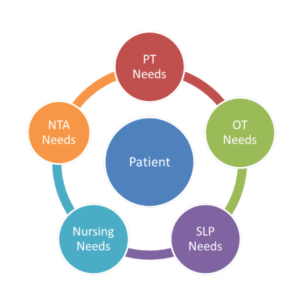CMS considers $4 billion SNF payment reduction
Since last October, skilled nursing facilities (SNFs) have been paid by the Centers for Medicare & Medicaid Services (CMS) at an adjusted rate based on anticipated utilization of services that was forecast under a new payment system. The payment adjustments were intended to ensure there would be no change in overall spending levels. However, CMS now says those projections were wrong, that actually there has been a significant increase in Medicare expenditures. As a result, the agency is considering an 11.3% payment reduction for 2012, which would amount to $3.9 billion.
According to CMS, new SNF patients are now being classified into one of the highest paying therapy groups more than 40% of the time, compared to less than 10% as originally projected. CMS determines its SNF payments using a case-mix classification system known as Resource Utilization Group, version four (RUG-IV). Each RUG-IV group is assigned a case-mix index that reflects relative differences in patient acuity. It is intended to reflect the kind of services a person requires, according to medical need and intensity of treatment.
“Pending confirmation of this preliminary assessment, CMS will be reviewing data from actual claims under the RUG-IV system as it becomes available,” the agency said in a news release April 28. “CMS will then evaluate the necessity of recalibrating the case-mix weights in the FY 2012 final rule.” That 11.3% cut is one of two options the agency is considering. The other reflects the standard rate update methodology and would provide a net 1.5% increase.
In addition to dealing with proposed SNF payment rates for 2012, the proposed rule from CMS would:
Implement a provision of the Affordable Care Act, which requires Medicare SNFs and Medicaid nursing facilities to disclose certain information in a standardized format to HHS (Department of Health and Human Services) and other entities regarding ownership and organizational structure of their facilities.
Revise the definition of group therapy to require allocation of group therapy minutes in assigning RUG-IV payment groups.
Require SNFs to complete a new Medicare-required assessment when changes occur in the intensity of therapy.
Revise the policy regarding “line-of-sight” supervision of therapy students.
SNF industry representatives quickly expressed their opposition to any thought of an 11.3% payment cut, warning that it would harm many homes’ ability to provide the quality of care that residents deserve. “Nursing homes that have not abused the benefit should not be penalized for this increase,” said a statement from LeadingAge (formerly, American Association of Homes and Services for the Aging).
Alan Rosenbloom, president of The Alliance for Quality Nursing Home Care (“The Alliance”), said the organization is “deeply concerned” about the proposal. However, he acknowledged the importance of fine-tuning the Medicare payment system in a manner that “gets it right,” while also protecting seniors’ care quality, preserving caregivers’ jobs and ensuring accountability to taxpayers. “We agree that it is critical to achieve an appropriate level of Medicare funding for SNF care, and we believe that can and should be done while also maintaining quality and stability within the SNF care system,” he said. “Our mutual objective is an accurately calibrated payment system under Medicare.”
Rosenbloom also stressed the need to address the issue in context with other factors affecting SNF care, such as rising patient acuity, shrinking length of stay, escalating costs and plummeting state Medicaid funding. “These are vital variables meriting consideration as the process towards a final rule ensues,” he declared. “We intend to work with government officials to create a sustainable approach to fine-tuning Medicare’s SNF payment system-one that is in the best interest of seniors, caregivers and taxpayers, and which contributes to the ongoing strength of our Medicare system.”
“We intend to work with government officials to create a sustainable approach to fine-tuning Medicare’s SNF payment system.”
The Alliance, just one day before CMS announced it was considering the massive SNF payment cuts, released a new analysis by Avalere Health LLC that details the economic and jobs contribution of nursing facilities in the nation’s 50 most populous metropolitan areas. That study provided fodder for Rosenbloom as he responded to the CMS proposal, noting that the SNF sector is America’s second largest health facility employer following hospitals, accounting for 1.7 million jobs with a total impact of more than $201 billion per year in economic activity.
“In addition to being a vital pillar of the U.S. economy and pivotal to badly needed economic expansion, SNFs have invested heavily in recent years to increase their capabilities to admit, treat and return to home a rapidly increasing number of patients requiring intensive post-acute rehabilitation and care for multiple chronic illnesses,” he said. “By treating these high-acuity beneficiaries in low-cost SNFs, Medicare ultimately saves funds. That is a baseline fact that cannot be ignored.”
Bob Gatty has covered governmental developments for the trade and business press for more than 30 years. He is founder and president of G-Net Strategic Communications, Sykesville, Maryland. Long-Term Living 2011 June;60(6):12-13

Robert Gatty has more than 40 years of experience in journalism, politics and business communications and is the founder and president of G-Net Strategic Communications based in Myrtle Beach, South Carolina. He can be reached at bob@gattyedits.com.
Related Articles
Topics: Articles , Medicare/Medicaid












